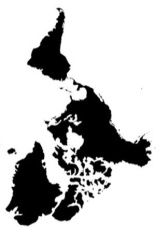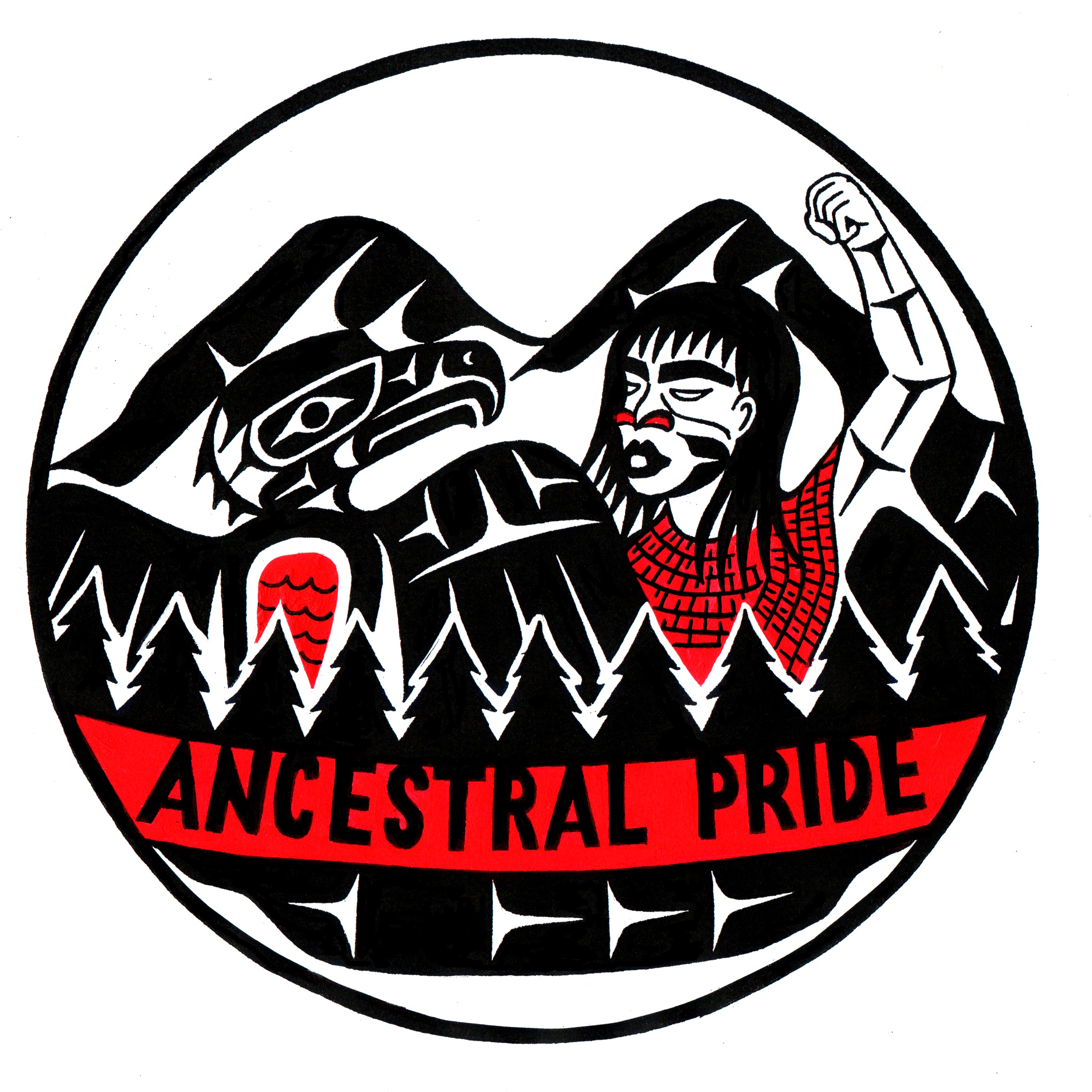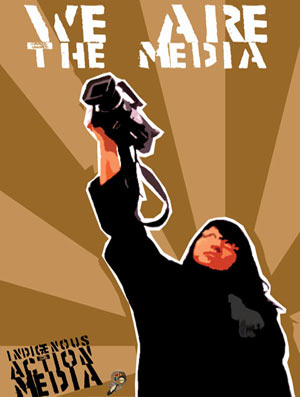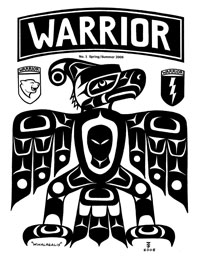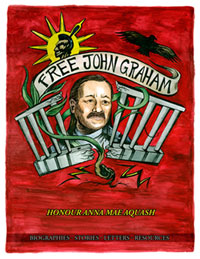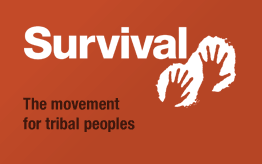 From Kurukshetra:
From Kurukshetra:
A few weeks ago was the annual Bay Area Anarchist Book Fair, which hosted a series of panels and workshops on various topics related to anarchism, anti-state and anti-capitalist organizing, and so on. One of the panels was titled “Decolonization and Anarchism”, and whose purpose was to investigate the intersection of the decolonization struggle with the anarchist movement in the Bay Area.
What was noteworthy in and of itself was that the six panelists were all people of color–a rare event given that anarchism in the Bay Area seems (on the surface at least) to be dominated by White people. I don’t think I remember ever attending an event related to anarchism in the Bay Area that was lead entirely by people of color. The audience was also very large–at least a hundred people, if not more.
In general, the panel–which went on for about an hour and a half–was less about investigating the rigorous theoretical connections between decolonization and anarchism, than it was about the individual panelists talking about their own personal perspectives and experiences as revolutionary people of color. There wasn’t much discussion about the practical steps around synthesizing the current anarchist movement with the theory and practice of decolonization that communities of color in the Bay are already engaging in, which was a bit disappointing; but it was still nice to hear something about the intersection, and the personal opinions of dedicated revolutionaries (even if the discussion was, in general, rather unstructured and somewhat scattered).
I want to emphasize that this reflection is heavily biased by my own preconceptions, and my own limited ability to take notes. I took notes on what was interesting to me, and there are definitely subjects and issues that were brought up that I do not discuss here. I might also mix up who said what, or even if certain arguments were said in the first place. There is also a chance that I misinterpreted what was said–a consequence of both my own biases, as well as the unstructured and personal nature of the panel.
Ecological Limits and Indigenous-Diaspora Solidarity
The first person to talk was a man named Bryan. He didn’t say much; he talked about how he personally was very interested in discussing and theorizing about the intersection of anarchism and decolonization, but also raised the question of whether there is an intersection in the first place, and the idea that perhaps anarchism was actually irrelevant to the decolonial struggle.
What really caught my interest was when he touched upon the idea that the ecological crisis is, in some ways, the ultimate limit of capitalism, and how this limit needs to be intimately tied with the struggle of indigenous peoples for their sovereignty and well-being. He mentioned the connections between the struggles of First Nations in Canada against tar sands extraction, and the struggles of people in Richmond against the Chevron oil refinery. I really appreciated this point, because the anti-carbon struggle in the Bay Area is something I have been investing a lot of energy into, and I really want to see more involvement of the radical community in this struggle (I’ve written a background piece about the nature of the oil industry in the Bay here, and a piece on the way that the struggle constitutes an anti-colonial struggle here).
Bryan also used the struggle in Richmond as a way to elaborate on the need for there to be more solidarity work between indigenous people, and people of the diaspora (immigrants). There is a natural anti-colonial axis on which this solidarity could revolve around; both indigenous peoples, and people of the diaspora (especially Latin American and South-East Asian peoples) have suffered excessive amounts of violence at the hands of US colonialism and imperialism (and capitalism in general), and thus it makes sense for there to be closer solidarity work between the two groups of people.
But in addition, it was argued that ultimately the diaspora should be following the example and fulfilling the needs of indigenous people first, due to the fact that in the end, this land is their land. I have mixed feelings about this idea; on one hand, of course we of the diaspora should be engaged in the struggle of indigenous people–but at the same time, we should recognize the very fluid nature of what constitutes indigeneity. The Ohlone people–the nation which lived in what is now known as the Bay Area–are undeniably the original occupants of the region. But what about the Mexican peoples who came in during the 17th and 18th century–who themselves tend to be a mix of Spanish and indigenous Central American descent? And does the fact that Latin America in general is an irreversible result of Spanish imperial conquest render all Latin Americans in the United States as “diaspora” rather than “indigenous”? And just to be clear, this isn’t to invalidate the idea of privileging indigenous struggle–just that the term “indigenous” is a term that is arguably fluid and confusing, and deserves much more discussion around.
I am personally very interested in seeing more collaboration between the diaspora and indigenous peoples. I’m of South Asian descent, so I’m very clearly part of the diaspora; and I definitely see a strong parallel between the experiences of indigenous peoples in the Americas facing off against American colonialism, and the experience of South Asians under British occupation. I see strong parallels between the cultural and linguistic dynamics of the two regions; both have incredibly diverse religious and cultural traditions, a wide variety of languages and dialectics, and general diversity within their own populations. Indeed, it is arguably still a mistake to homogenize the two regions’ populations under the term “indigenous American” or “South Asian”, given the vast differences in internal history, politics, and practices. But of course, the parallels have limits; while tens of millions of South Asians were killed under the British Raj, the devastation does not come close to the violence and destruction that resulted from the European invasion of the Americas.
Anarchism and Modern Settler Colonialism
The second person to speak was a man named Hannibal. He mostly read a series of short lines of thoughts from his journal, and most of his ideas revolved around how anarchism in the Bay Area seems to be dominated by White people from outside of the Bay, at the expense of existing communities of color who have much longer histories of struggle here. His arguments are certain to be the most controversial of the bunch, in that they can easily be perceived as an attack on White people (which I don’t think it was, at all).
He started off his speech by posing the following question:
Can it still be called “anarchism” if it is only possible because of settler colonialism?
And he urged the audience to not try to immediately answer the question, but instead to give it some serious thought and reflection.
He went on to talk about the need to move away from White-normative modes of thinking, and the dominance of White people in anarchist spaces in the Bay Area. He didn’t elaborate much on what he was referring to; however, he did argue that White people seemed to have more social capital in anarchist spaces, which resulted in White voices being amplified at the expense of people of color. He also argued for the need to emphasize community norms and practices, over that of “martyrs and symbolic actions.” The latter was implicitly tied with being a “White-normative mode of thinking.” What I think was meant by the reference to martyrs and symbolic actions, was the stereotypical propensity of anarchists to engage in symbolic demonstrations and actions–as opposed to the hard work of building up the autonomous economic and political power of existing communities and populations, and giving concrete solidarity to existing community struggles.
This may seem overly harsh, or unfounded to somebody who hasn’t experienced the dynamics of Bay Area anarchism, but I’ve seen spaces acting in certain manners that suggest that that the above critique is warranted. For example, take the narrative of the anarchist community center El Qilombo–formerly known as The Holdout. From what I understand, this place was–until recently–a space that was dominated by young White anarchists in a predominantly Black neighborhood. There was little interaction between the two groups–until anarchist and radical people of color got fed up with the unwillingness to engage with the local community and their struggles, pushed for serious changes and reinvented the space as El Qilombo. Since then, there has allegedly been much more involvement between the space and the surrounding community–making it a legitimate community center.
I haven’t had much personal experience with El Qilombo, but I remember seeing a similar dynamic at a squat that I’ve been to a few times in Oakland. From my limited perspective, the squat seems to be composed of mostly young White folks, while the surrounding neighborhood is mostly Black. I’ve always wondered whether there was any interaction between the community and the squat, but I never got around to asking anybody at the space there what their efforts for integration and solidarity were–and if they even had a strategy or plan to have concrete ties with the community.
And all this comes back to the question posed at the beginning of Hannibal’s spiel, on the relationship between anarchism and settler colonialism. One on hand, the question can be seen as a critique of anarchism as a First World American phenomena–something specific to the United States, and thus a product of its violent history of colonialism and genocide. But I think in light of the observations above and the specific events that have happened in the Bay recently, it makes more sense to see “settler colonialism” as a reference to the unfortunate tendency of White anarchists to essentially colonize poor communities of color, and be completely detached from the actual struggles and issues that the communities that they live in are engaged in.
Thus, we can reframe the question in a different way: Is it really “anarchism” if all you’re doing is colonizing a poor community of color in order to satisfy your desire to be a young hip “rebel”? Is it really revolutionary if you’re not going to engage in an intergenerational struggle alongside the communities that have had to deal with the violence of State and Capital for decades upon decades?
I think this piece, from Bay Area Intifida, gives an interesting overview of the current struggles taking place around White supremacy in the Bay Area anarchist movement. But I’d like to draw attention to this particular paragraph from the piece, because it emphasizes the fact that the critique and observations above shouldn’t be taken as a form of identity politics where White people have no place whatsoever in the struggles of existing communities in the Bay, but in fact do have a concrete place in the struggle. Speaking about recent actions lead by revolutionary people of color in the Bay:
In every single instance, there was collaboration in some degree with white counterparts. What we’ve seen over the past year was never entirely separatist. It certainly made conscious decisions on when and how political and social separatism should be employed and kinks that still needed to be hashed out. But the point remains the same here: white people were a part of the struggle for self-determination this past year and they were a part and did struggle by knowing their place. This is not a mere “white alliance” that sidelines white people as observers who share resources. But these people knew what support meant and why it is so important. They knew that we needed (and continue to need) to determine our own path towards liberation and that they, as white people, should not to try to speak for other people’s struggles, especially when standing right next to a person from those communities. They knew that their support would not be known and they got behind the push for self determination anyway.
In the end, despite there being issues with persistent White supremacy in the anarchist movement, it remains clear that this is a struggle that we are all a part of. The “anarchism” that results from settler colonial tendencies is in no way conducive to the actual project of anarchism and revolutionary autonomy; but this “anarchism” is by no means inherent or static, and I am optimistic that settler colonial tendencies will increasingly cease in the coming years.
Decolonizing Education
The third speaker was a woman named Francis, who works with Oakland youth. She mainly discussed the role of intergenerational struggle and the need to foster and collaborate with revolutionary youth, but she also made some comments about the more theoretical connection between decolonization and anarchism.
Specifically on the latter subject, Francis argued for the idea that decolonization was a superior framework to anarchism, and encompassed and surpassed anarchism as a revolutionary praxis. I cannot exactly remember the specific reasons, but I think this argument has to do with the fact that the struggle against colonialism has been going on for over 500 years; long before anarchism was consolidated in Europe as an ideology (although I could be mixing up who made this argument, since this article I read recently from the Zapatistas puts forward the same argument). I am more or less apathetic to the idea that a certain ideology is “superior” to another; I think that any revolutionary ideology, if it has the correct practice (that is, grounded in local circumstances and privileging the building of autonomous power), will be indistinguishable aside from differences in semantics. But if we do define decolonization as “anarchism without settler colonial tendencies”, then there should be no doubt that decolonization is a better praxis.
The more interesting part of this talk was the discussion around the way that modern education in California enforces White supremacy and subjugates Black and Brown children. It was argued that the fact that Oakland’s schools, whose upper hierarchies are filled with White people despite the students being mostly of color, constitutes a form of violence in that the school system essentially normalizes Whites as the natural elites in American society. What other conclusion could young children draw, if the people they see at the top of the hierarchy in a space where they spend most of their adolescent life are White?
Furthermore, Francis identified the school system as a space where not just White supremacy, but rape culture and patriarchy are produced as well. She touched upon her own personal childhood experience in Oakland, and how as she entered puberty and her body underwent the expected biological transformations, she and her fellow women became the targets of unwanted and aggressive sexual attention–a dynamic which the teachers, rather than discouraging and enforcing a safe space for women, encouraged and supported what was viewed as “innocent teasing” and “boys being boys.” If this is the norm of the school system, is it any wonder that patriarchy and the dehumanization of women into sexual objects for men remains a potent and foundational structure for modern society?
Taking all this into account, Francis argued that it is crucial for more revolutionaries to engage with the colonial school system, and to directly attack the production of White supremacy and patriarchy in this site. Which isn’t exactly a new argument–the nature of the public school system of the United States has drawn many radicals to it, and I certainly remember my old high school have quite a few teachers who threw out some subversive material now and then. But it is something that I think is important to reinforce; involving oneself in the school system is an excellent way to get oneself to create long-term investment in the revolutionary struggle and plant the seeds for a truly long-term and sustainable movement that doesn’t have the transient nature of “settler-colonial anarchism”.
“Black” vs. “African”
The fourth speaker was a man named Chaga. He mainly focused on one idea: the idea that his people needed to ditch the term “Black” as a signifier for their race, and adopt the term “African”.
The main argument that Chaga put forward for this was that Africans in the United States needed to have a better identification with a homeland, and a better reason to observe and analyze the historical and present dynamics of Africa and its place in a colonial-capitalist world order. He argued that the term “Black” only served to divide Africans in the United States and Africans in Africa, when in fact the best way forward was to unite the two populations around a common anti-colonial axis, and create more solidarity between struggles in Africa and struggles in the US.
I wasn’t terribly persuaded, although I will be in solidarity with such efforts. The reason why I wasn’t persuaded is because of the existence of revolutionary groups who identified as “Black”, but still kept and fostered concrete ties with African revolutionaries on account of their shared “Blackness”. From my perspective (and emphasis on this perspective being tinted by me not being Black/African), it also seems like “Black” has a long and proud history of revolutionary struggle, and it seems odd to me that it should only be identified as a reactionary result of efforts to distract Africans in America from the dynamics of capitalist violence in Africa.
More on Decolonizing Education
The fifth speaker was a woman named Corrina, who was quick to identify herself as an Ohlone woman. She discussed two topics: a recent struggle around Ohlone burial grounds which used direct action to successfully save the sacred land from being destroyed and developed over, and the issue of California’s education system essentially erasing indigenous people and history. Unfortunately, I didn’t take notes on the former topic, so I’ll just go over the latter.
Corrina blasted the way that the education system basically teaches American history as if indigenous people were somehow erased from the lands centuries and centuries ago–despite the last battles of the American-Indian Wars being fought just a little over one century ago, long after the end of the Civil War. And this type of teaching is even more problematic given that indigenous people didn’t disappear–they still exist, live and struggle against the same colonial-capitalist system that arrived on the Eastern shores of America back in 1492! And yet, the way the education system teaches indigenous history makes it seem like the extinction of indigenous people happened long ago, and that modern indigenous people are merely relics of an ancient past, irrelevant and clinging to dead traditions and cultures. Its a powerful way to make the children who pass through the education system–people of settler descent, the diaspora, and the indigenous themselves–see indigenous struggle as a bizarre relic of a different time, rather than a struggle that is continuous, dynamic, and strong.
In addition, Corrina raised the issue of the way the missions of the Spanish are taught in modern Californian schools. If one were to believe the official curriculum, the mission system of the Spanish empire was a great boon to the Ohlone Indians, and the other indigenous peoples of the West coast. The Spanish taught them how to farm, read, write, wear clothing, and do other “civilized” things. Of course, never mind about the fact that the missions were essentially concentration camps, killing off 90% of the Ohlone population between the late 18th century up through the mid 19th century.
The education around the mission systems is made even more disgusting by the fact that it is common practice for elementary school kids to construct miniature models of the missions out of toothpicks and marshmallows and whatnot–a tribute to a genocidal machine of imperial conquest. One could imagine how Jewish people (or anybody knowledgeable about the Holocaust) would feel if German kids today were assigned projects to construct miniature Auschwitz’s out of cute household items.
Individual Resistance
The last speaker was a First Nation woman from Canada named Kanahus. She basically gave a narrative about her own political evolution in Canada (or “Klanada”, as she called it a couple of times), and her current forms of resistance to a settler-colonial nation. I didn’t take much notes down, mostly because I wanted to not be distracted from her narrative; she seemed to make a great effort to speak from the heart.
Kanahus talked about how she partook in a protest when she was pregnant–and was thrown in jail for a few days because of it. She talked about how when her children were born, she decided to no longer engage with the Canadian government, and instead gave birth by herself in a traditional indigenous manner. She also proudly proclaimed how she refused to register her children with the government–an act which is required by law of all indigenous people living in Canada. Kanahus also returned to the theme of ecology, and argued for the need to figure out better ways for us to withdraw from the destructive capitalist system and reduce our personal role in the degradation of Mother Earth.
While I didn’t agree with some of the political stances she took (i.e. the idea of putting a lot of energy into withdrawal from the system), I still felt moved by her narrative, and ultimately do not feel like I am, or ever will be, in a position to criticize or debate politics that stem from such a deep, personal history of repression and resistance.
Conclusions
All in all, while it was a somewhat scattered discussion, I enjoyed the panel as a space that provoked a lot of thought. In addition, it was great in and of itself to see a panel lead by revolutionary people of color, who talked explicitly about sustainable, intergenerational revolutionary organizing–as opposed to the what is arguably a somewhat self-serving and hyper-individualistic nature of the current anarchist “scene” of the Bay Area. (Of course, this could be an unfair generalization; I’ll again emphasize that my own contacts and observations are limited, and my sample size too small for me to make such statements with any real confidence).
In general, I think it was a productive session, and hopefully has inspired much thought and reflection in the Bay Area’s anarchist community.


